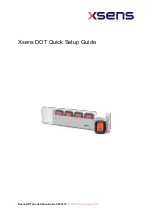
3-4
IM AQ7277-17EN
When Concatenating Commands
Command Group
A command group is a group of commands which havethe same compound header.
A command group maycontain sub-groups.
Example Commands relating to acquisition settings
:ACQuire:AVERage:MODE
:ACQuire:ATTenuation
:ACQuire:AVERage:TYPE
:ACQuire:DRANge
:ACQuire:PWIDth
:ACQuire:REALtime:STARt
:ACQuire:SETTing
When Concatenating Commands of the SameGroup
This instrument stores the hierarchical level of the command which is currently being
executed, andperforms analysis on the assumption that the nextcommand to be sent will
also belong to the same level.Therefore, it is possible to omit the header if thecommands
belong to the same group.
Example
:ACQuire:AVERage:MODE HIREFLECTION;TIME AUTO<PMT>
When Concatenating Commands of DifferentGroups
A colon (:) must be included before the header of a command, if the command does not
belong to the same group as the preceding command. It is impossible to omit a colon (:).
Example
:ACQuire:AVERage:MODE HIREFLECTION;:DISPlay:CURSor
:SECond ON<PMT>
When Concatenating Common Commands
Common commands defined in IEEE 488.2-1987 are independent of hierarchical level.
Thus, it is not necessary to add a colon (:) before a commoncommand.
Example
:ACQuire:AVERage:MODE HIREFLECTION;*CLS;TIME AUTO<PMT>
When Separating Commands with <PMT>
If a terminator is used to separate two commands,each command is a separate
message. Therefore, thecommon header must be typed in for each commandeven when
commands of the same command groupare being concatenated.
Example
:ACQuire:AVERage:MODE HIREFLECTION<PMT>:ACQuire:AVERage
:TIME AUTO<PMT>
3.2 Commands
















































